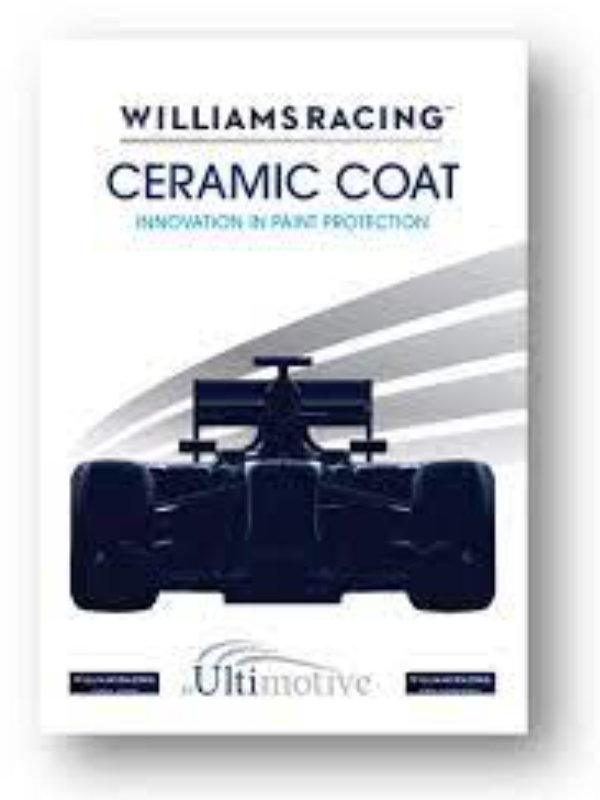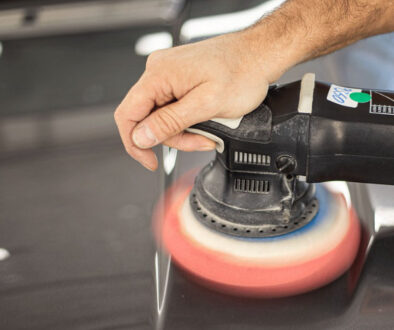Wax v Ceramic Coat – which is right for your car
On the surface it appears the answer should be simple, but, as with so many things, appearances are deceptive!
The short answer is: it depends on what you’re trying to achieve and the use of the vehicle you will be applying it to.
By examining the properties of these two different last step products this article aims to furnish the reader with a few facts to allow an informed decision to be made.
Carnauba Wax
Carnauba is a natural substance derived from the leaves of the palm, Copernicia prunifera, also known as The Tree of Life. Native to northern Brazil, the Copernicia prunifera has been planted in other countries, however only the trees in their native environment produce the wax, as its production is a direct response to the harsh, dry conditions. The palm fronds secrete carnauba to protect them from the intense heat of the sun and to allow the trees to retain their moisture.
The wax extraction process is time consuming and laborious; hardly surprising therefore that the higher the concentration of carnauba in a jar of automotive wax, the higher the cost. Initially the leaves are collected and sun-baked to allow the wax to dry to a powdery consistency. The dried leaves are beaten to release the wax which is then refined by means of filtration and centrifuging. In its natural form carnauba wax exists as hard, yellowish brown flakes. As it is refined it’s classified into grades of purity, T4, T3 and T1 which is highest grade of carnauba available. ‘White’ or ‘Ivory’ carnauba doesn’t exist naturally – to attain this colour the carnauba must be chemically bleached.
Carnauba wax sets as hard as concrete, is non-toxic, hypoallergenic and has a very high heat tolerance – around 85 degrees Celsius. Carnauba wax is well known in detailing circles for the ‘lotus effect’ it produces, where water forms into beads and easily rolls off surfaces. This phenomenon often referred to as ‘beading’ is a caused by a high contact angle between the water droplet and the vehicles surface: the greater the angle, the more hydrophobic properties the wax exhibits. To be classified as hydrophobic a substance must exhibit a water contact angle greater than 90 degrees. Above 150 degrees it is classified as superhydrophobic. In its purest form carnauba creates a water contact angle of between 107 degrees and 123.5 degrees, putting it in the middle to upper reaches of hydrophobic classification.
As previously referred to, Carnauba wax in its natural state has a coloured hue to it, the slight opacity provides a ‘jetting’ effect, altering the reflection of light to produce the ‘wet-look’ that high quality carnauba waxes are well known for. The yellowish tinge of carnauba enhances the warmth of automotive paintwork particularly evident on red, yellow and orange colours.
Not limited to paintwork, carnauba waxes fortified with ingredients such as Polytetrafluoroethylene (PTFE) are also available for the protection of alloy wheels by repelling dirty water, road grime and brake dust.
The higher the percentage of carnauba by volume in the finished wax, the more durable it is, the better the wet-look shine and the more effective the ‘lotus effect’. Typically, over a UK summer, two layers of a wax that contains 30% carnauba by volume can be expected to last around ten to twelve weeks. By contrast a wax containing around 60% carnauba by volume could last up to six months and even be effective over winter.
In short, carnauba is a natural product, pleasant and easy to work with, provides a deep, wet-look shine, is heat resistant and has excellent hydrophobic properties. For car care enthusiasts who love to regularly spend time detailing their vehicle, or for special cars that spend a large proportion of time in the garage and only come out on high-days and holidays, a carnauba-based wax is an excellent choice.
Ceramic / Quartz / Glass Coatings
These are the names given to vitreous (glassy) sealants and in the automotive world are often used interchangeably. Their names are derived from their use of silica, a component in the manufacture of ceramic and glass products. In nature silica is most commonly found as quartz (SiO2) and in its purest state has a mineral hardness of 7 on the Mohs scale (1-10), for reference diamond measured on the same scale is 10. The perception of ceramics is that they are opaque and white in colour, but this is not always the case as ceramics exist in a variety of compositions and colours with a wide range of molecular structures.
Ceramic coatings are derived from N.A.S.A. spin off technologies: the Space Agency originally devised ceramic-based paints for use on space shuttles for their heat insulation and anti-corrosion properties.
Various research and development has lead ceramic technologies to be found in the automotive care market where they offer a much higher level of protection from various elements than other last step products. Unlike carnauba waxes, ceramic coatings are inorganic. As such they can be manufactured to be resistant to far higher temperatures than carnauba.
Modern ceramic coatings are typically based on nanotechnology.
When reduced to the nano-scale (less than 100 nanometers), various properties of a material will change, including mechanical, insulation, optical, etc. due to the increase in surface area over the volume. At the nano-scale materials therefore become much more resistant to outside forces in comparison to the same materials at the macro-scale. Nanotechnology-based ceramic coatings offer significant resistance to extremes of pH, extremes of temperature and compressional forces. As a result these coatings offer automotive surfaces protection from acid rain, freezing rain, harsh wash chemicals, direct sunlight and even from light swirls (usually caused by poor washing techniques).
They form strong chemical bonds with substrates at the atomic level so these coatings cannot be removed using paint cleaners or pressure washers; they will not wash away in a storm as some other last step products might: they are inherently extremely durable.
Their use is not limited to paintwork: ceramic coatings are also available for glass, where their hydrophobic properties are of particular benefit; plastics, where their resistance to UV is beneficial and also on alloy wheels, where their slick nature and resilience to heat help repel damaging brake dust particles.
Some ceramic coatings are available for retail purchase but there are some that require professional application in controlled environments. Their durability requires the paintwork to be in perfect condition prior to application: scratches and swirls in the paintwork should be removed as once the coating has cured, these imperfections are sealed beneath.
All surfaces to be coated also need to be properly decontaminated and cleansed, ensuring they are completely free from any residues that may interfere with the bonding process. The cleaner the substrate, the higher the number of chemical bonds the sealant can form. Temperature, humidity and environment all have to be controlled in order for the sealants to provide their maximum protection. Once professionally applied, many ceramic sealants are guaranteed by the manufacturer for between two and seven years.
To summarise: ceramic coatings are inorganic, synthetic and provide prolonged protection from chemicals, industrial and environmental fallout and light surface marring. Due to their durability paintwork and other substrates must be properly prepared prior to application, but once applied, all that is required in terms of up keep is a regular maintenance wash and an occasional top up with a compatible quick detailing spray. Their imperviousness to chemicals and inherent hardness offer a great solution for those with little time or inclination to spend on their vehicles.
In conclusion, there is no winner or loser when it comes to the battle of Wax Vs Sealant.
The important factors are how much time you have to spend on your car, how much inclination you have to maintain it and how the car is going to be used.
Typically a wax allows the flexibility to enjoy the full detailing process on a more regular basis and therefore better serves the car / detailing enthusiast. For those simply looking to protect their ‘daily drive’, especially from new, a highly durable ceramic sealant may well be a better choice.






